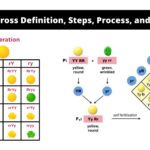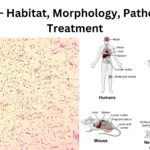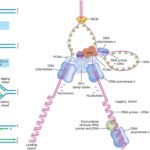Describe aerobic respiration as the chemical reactions in cells that use oxygen to break down nutrient molecules to release energy
Describe aerobic respiration as the chemical reactions in cells that use oxygen to break down nutrient molecules to release energyDescribe aerobic respiration as the chemical reactions in cells that use oxygen to break down nutrient molecules to release energy%MCEPASTEBIN%
Please login to submit an answer.
Aerobic respiration is a vital metabolic process that occurs in the cells of many organisms, including humans, animals, and plants. It involves the breakdown of nutrient molecules, primarily glucose, in the presence of oxygen to release energy. Here’s a detailed description of the process, including the chemical reactions involved:
Overview of Aerobic Respiration
Aerobic respiration can be summarized by the following general equation:
In this equation:
- C₆H₁₂O₆ represents glucose.
- O₂ is molecular oxygen.
- CO₂ is carbon dioxide.
- H₂O is water.
- ATP (adenosine triphosphate) is the energy currency of the cell.
Stages of Aerobic Respiration
Aerobic respiration occurs in several stages, each taking place in specific cellular locations:
1. Glycolysis
- Location: Cytoplasm
- Process: Glycolysis is the first step in aerobic respiration and does not require oxygen. It involves the breakdown of one molecule of glucose (6 carbons) into two molecules of pyruvate (3 carbons).
- Chemical Reaction:
- Glucose is converted to pyruvate through a series of enzymatic reactions.
- During this process, a net gain of 2 ATP molecules and 2 NADH molecules (electron carriers) is produced.
2. Pyruvate Oxidation
- Location: Mitochondrial matrix
- Process: Each pyruvate molecule produced from glycolysis is transported into the mitochondria and converted into acetyl-CoA. This step also releases one molecule of CO₂ for each pyruvate.
- Chemical Reaction:
3. Krebs Cycle (Citric Acid Cycle)
- Location: Mitochondrial matrix
- Process: Acetyl-CoA enters the Krebs cycle, where it undergoes a series of reactions that produce additional electron carriers and ATP. For each acetyl-CoA that enters the cycle, two CO₂ molecules are released.
- Chemical Reaction:
- The Krebs cycle generates:
- 3 NADH
- 1 FADH₂ (another electron carrier)
- 1 ATP (or GTP)
- The Krebs cycle generates:
For two acetyl-CoA molecules (from one glucose), the overall reaction is:
4. Electron Transport Chain (ETC)
- Location: Inner mitochondrial membrane
- Process: The NADH and FADH₂ produced in previous steps donate electrons to the electron transport chain. As electrons move through a series of protein complexes, they release energy used to pump protons (H⁺ ions) into the intermembrane space, creating a proton gradient.
- Chemiosmosis: Protons flow back into the mitochondrial matrix through ATP synthase, driving the production of ATP from ADP and inorganic phosphate.
- Final Electron Acceptor: Oxygen acts as the final electron acceptor, combining with electrons and protons to form water:
Energy Yield
The total energy yield from aerobic respiration can vary depending on conditions but typically results in approximately 30 to 32 ATP molecules per molecule of glucose, making it a highly efficient process for energy production.
- Share on Facebook
- Share on Twitter
- Share on LinkedIn
Helpful: 0%




